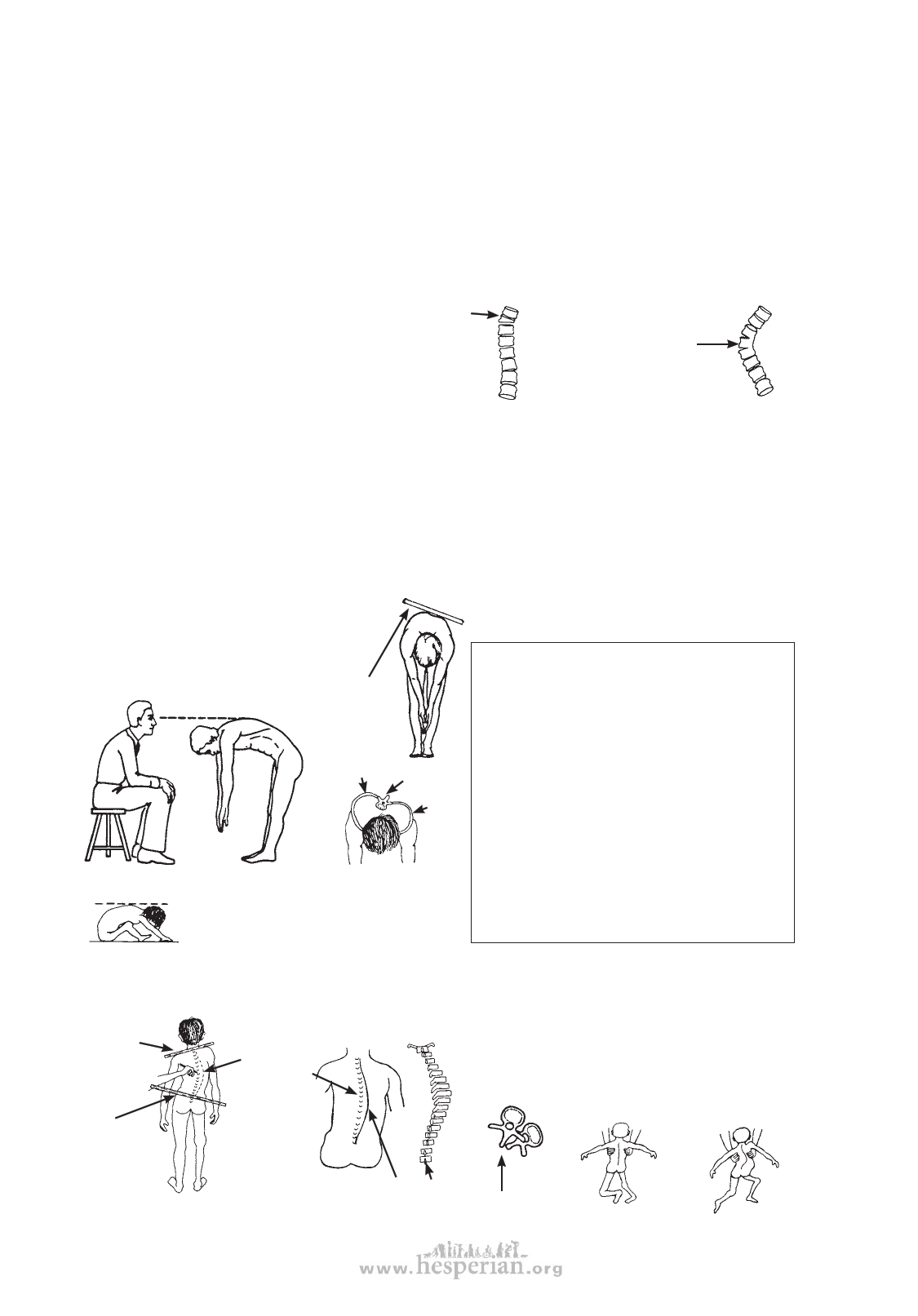
162 chapter 20
CAUSES OF SPINAL CURVE (SCOLIOSIS)
Most scoliosis (about 80%) occurs in otherwise healthy children for no known
reason. Sometimes it occurs in several members of the same family, so there may be
a hereditary (familial) factor. Although about 1 of every 10 persons has some scoliosis
(if looked for), only about 1 in 400 has enough of a curve to be a problem. Curves of
unknown cause are often first seen—and progress quickly—in children from 10 to 16
years old, during the period of rapid growth.
Known causes of fixed scoliosis range from infection to tumor to rare disease. When
possible, consult a doctor with experience in these problems.
Some children are born
with fixed scoliosis, or develop
it in early childhood, because of
defects in the spine itself.
Non-fixed scoliosis always
results secondary to other
Sometimes one
or more vertebrae
are only partly
formed and cause
the spine to bend
to one side.
Sometimes 2 or more
vertebrae remain attached
or ‘fused’ on one side.
They can only grow on the
unfused side, causing an
increasing curve.
These problems can only be identified by X-rays.
problems, such as uneven paralysis of the back muscles, or a hip tilt (often due to
a shorter leg). Spinal curve often develops in children with polio, cerebral palsy,
muscular dystrophy, spina bifida, spinal cord injury, arthritis, and dislocated hip. Be
sure to examine all children with these disabilities for spinal curve. With time, non-
fixed curves may gradually become fixed.
Examining for spinal curve
This is discussed in
the chapter on physical
examination (Chapter 4).
Look along
the line of
the back with
the child
bent over.
a higher
rib hump on
one side
rib hump
vertebra
rib
The rib hump is formed
because where the
spine is curved, the
vertebrae also are
twisted to one side.
POSSIBLE SIGNS OF EARLY SCOLIOSIS
1. one shoulder higher than other
2. One shoulder blade sticks out more.
3. One hip is higher or sticks out more than
the other.
4. One arm hangs closer to body than
the other.
5. sway back
6. rounded shoulders or ’hump back’
7. a larger crease at one side of
waist than other
8. Child stands sagging or leaning to
one side.
9. rib hump (when child leans forward)
10. a hump near the waist (when
leaning forward)
11. a brother, sister, parent, or close
relative with scoliosis
CHECK FOR:
one
shoulder
lower
than the
other
hip
tilt
To see the
curve better,
mark the
tip of each
vertebra.
The actual
spinal curve
is greater
than the
curve you
have marked.
actual curve (as
seen in X-rays)
overhead
view of
vertebrae
tips
When you examine for
scoliosis, also check to
see if the curve
can be
straightened
(non-fixed),
or cannot be
straightened
(fixed).
Disabled village Children